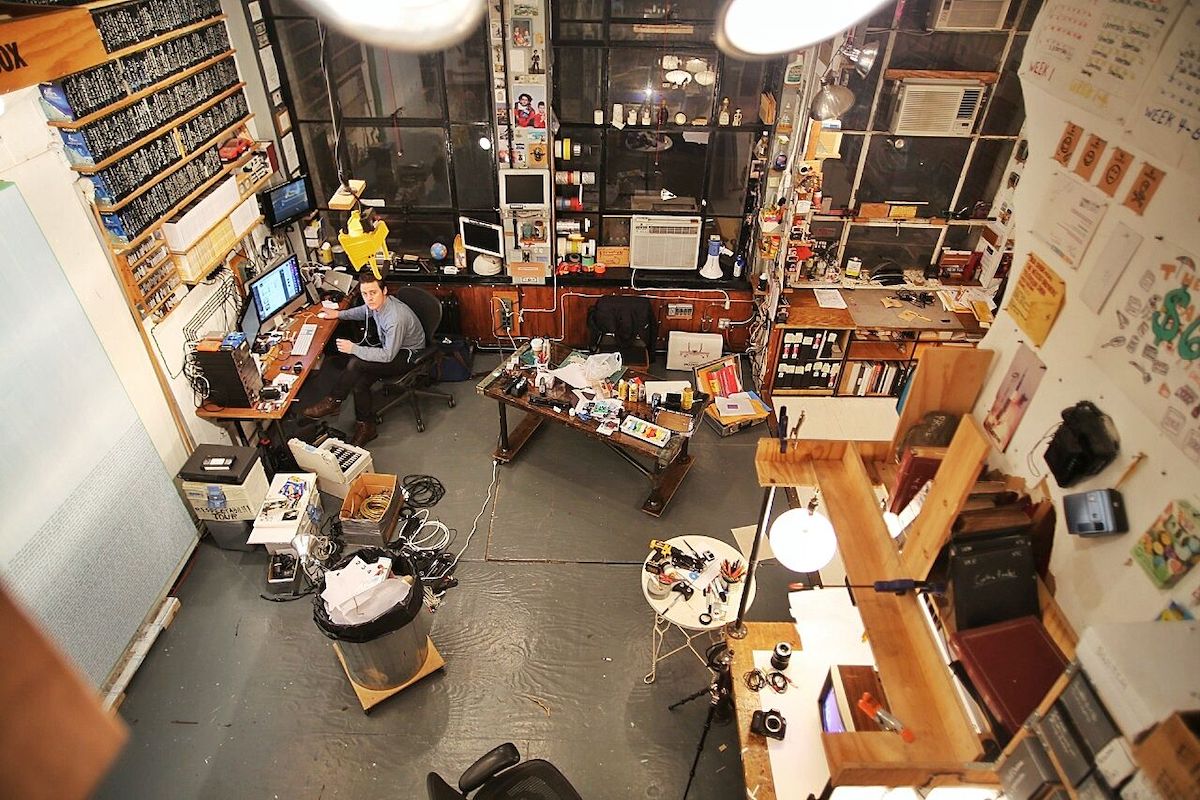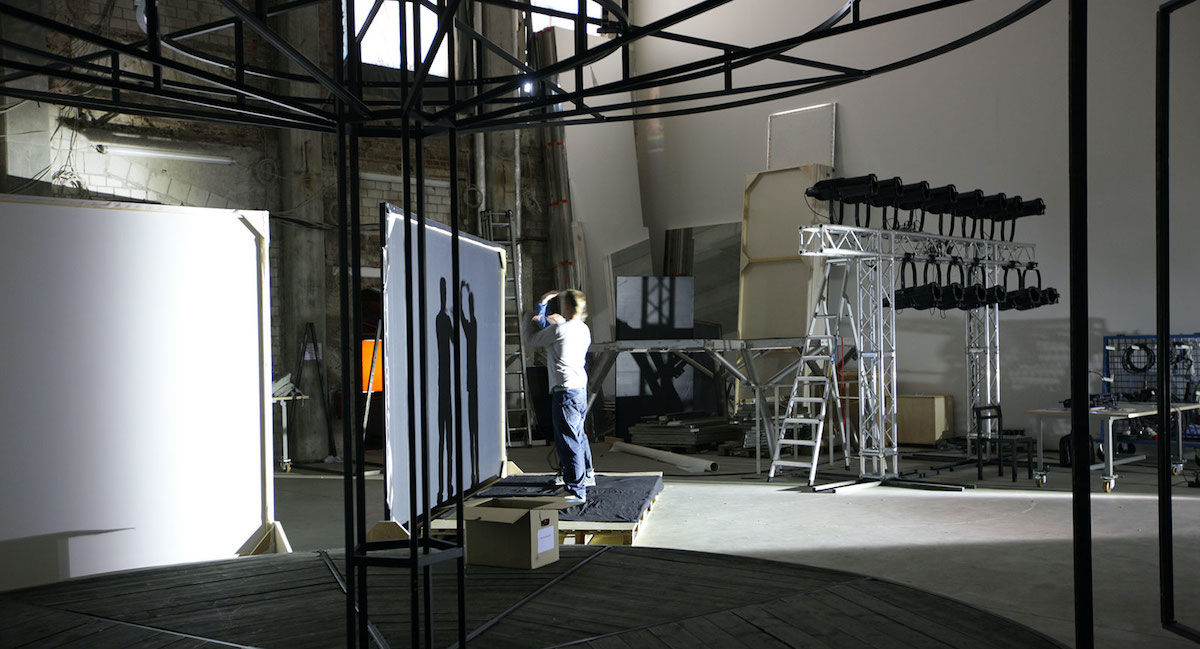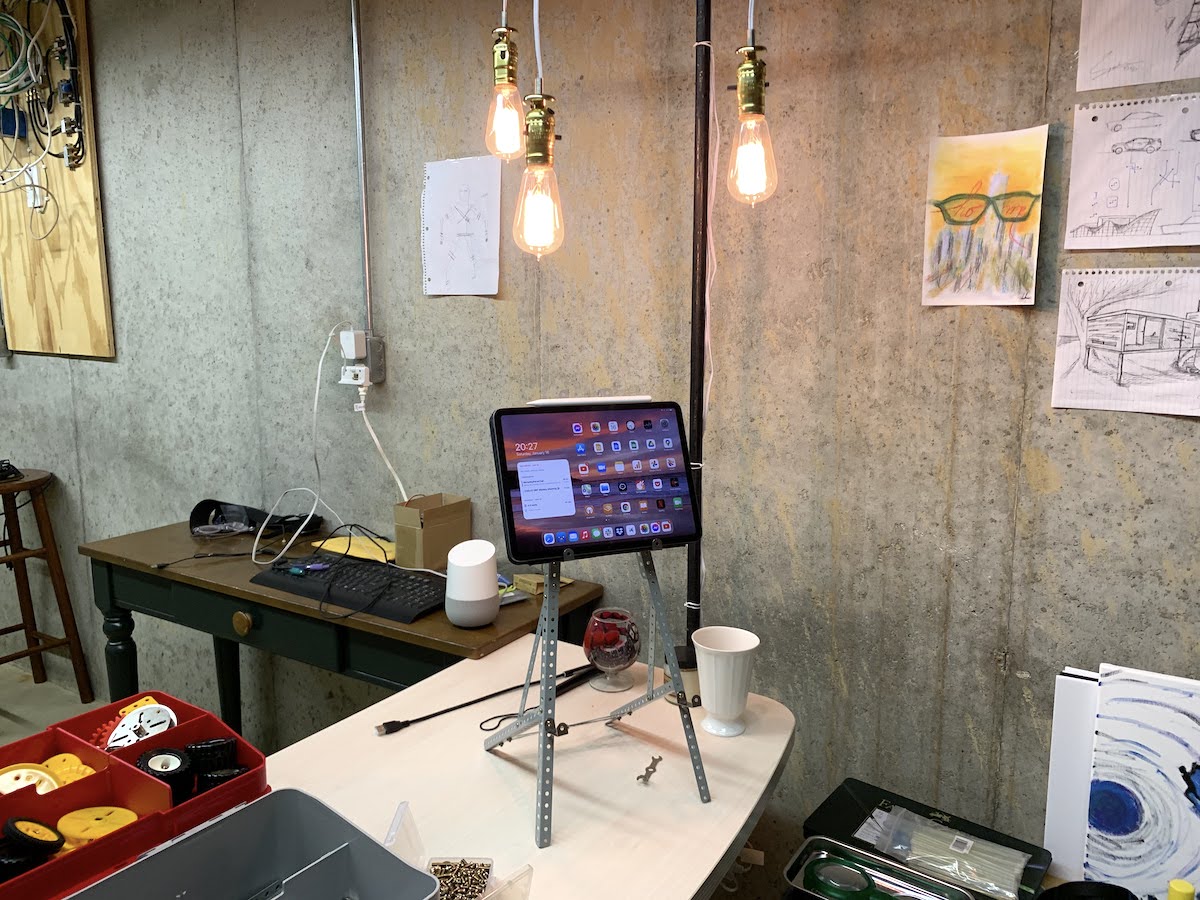This is an excerpt from today’s issue of my weekly newsletter.
By a studio, I mean a space for creative work that has grown and accreted the right tools in the right places over time. It’s a larger version of the “desktop” analogy. Looking at someone’s studio can tell you a lot about the work they do, their sources of inspiration, the kinds of mistakes they make and the thinking process they go through.

Studio spaces aren’t limited to artists and craftspeople. As a person who makes things with code, I have a more abstract “studio” space, inside my computer. In the digital space where I work, I’ve placed the scripts, shortcuts, and programs most important to me at an arm’s reach, so to speak. They’re referenced by short two or three-letter shortcuts I can type, or small websites I can go to in an instant. The tools that I only use rarely are less accessible.
The neat thing about a studio space is that it’s both intentionally invented and organically discovered over time. Certainly, anyone who moves their work into a studio will try to arrange the furniture and the lights and the tools to fit their workflows best. Maybe this means installing soundproofing on the walls for a videographer, or designating a corner of room for a greenscreen and some professional lighting.

But the most interesting parts of someone’s workspace are always the things they didn’t intentionally arrange from the start. Maybe it’s the way the door is always propped open so you can go on a walk to think a few times a day. Maybe it’s how half the windows are covered in post-it notes. You might like to have a wide, clean slate to start every idea from, or your table might be cluttered with sketches and pencils and little napkin drawings you brought back from the cafe when an idea struck and you couldn’t write it down anywhere. These discovered aspects of a space tell the best stories.
I’ve been thinking about how we can treat our task of designing and discovering our lives as if we were building a studio for our life’s work. How can we design life if we think of each of ourselves as a one-person creative studio producing little pieces of work over time? There are major aspects you can control, like where you work, who you let into your “studio” to work with you. You can fill the atmosphere in your life with things that inspire you creatively. But so much of the details that make the vibe of the “space” of life is discovered. They are the result of a hundred little micro-decisions we make on a daily basis.

We draw the outlines of a picture with the big, milestone-making decisions, and the little choices we make every day color them in over time. What small choices are you coloring with today?